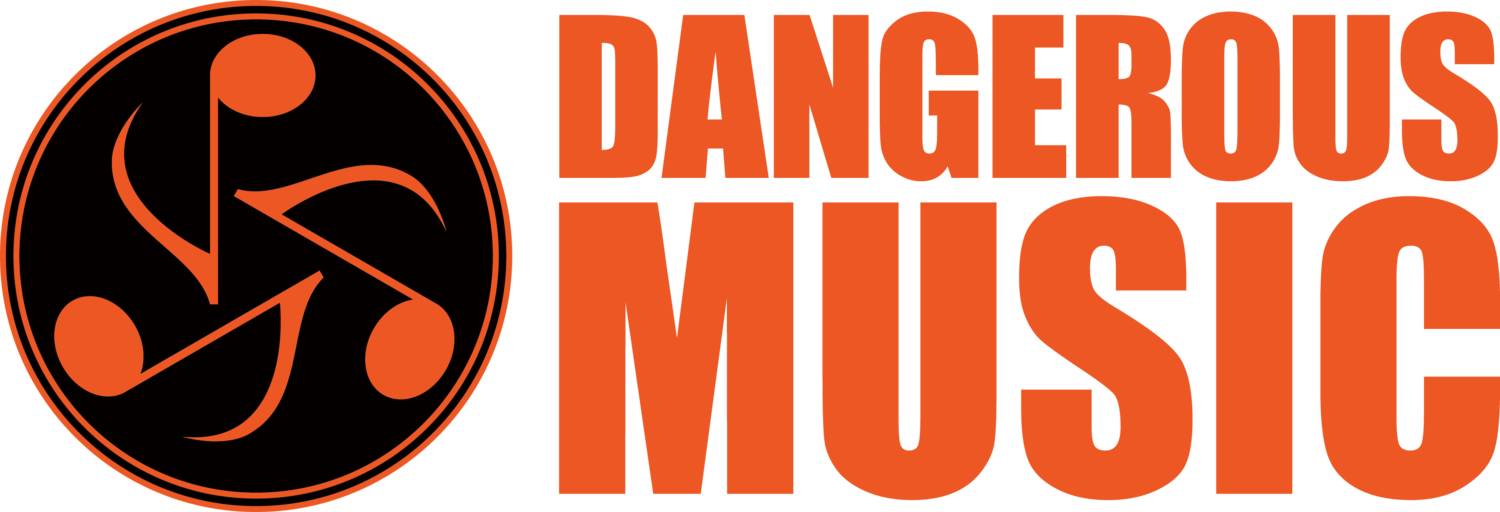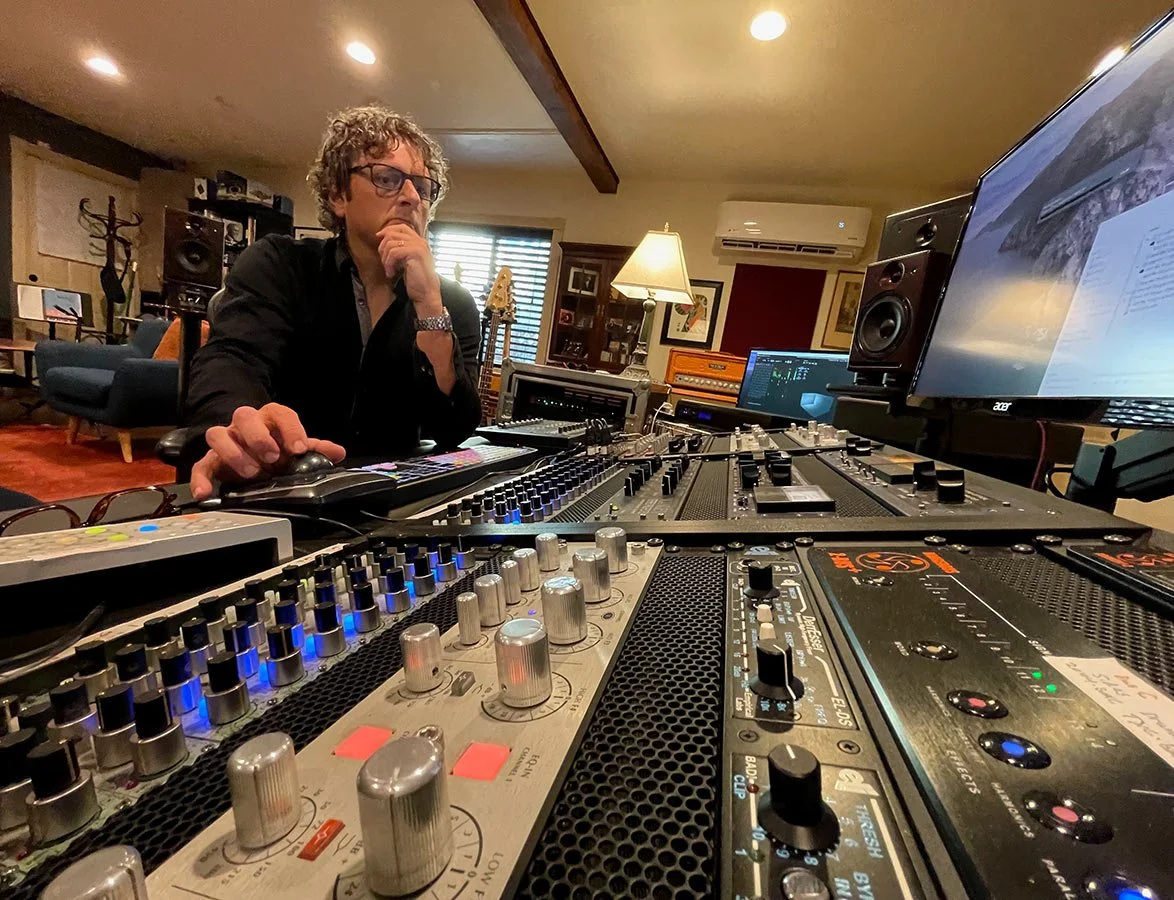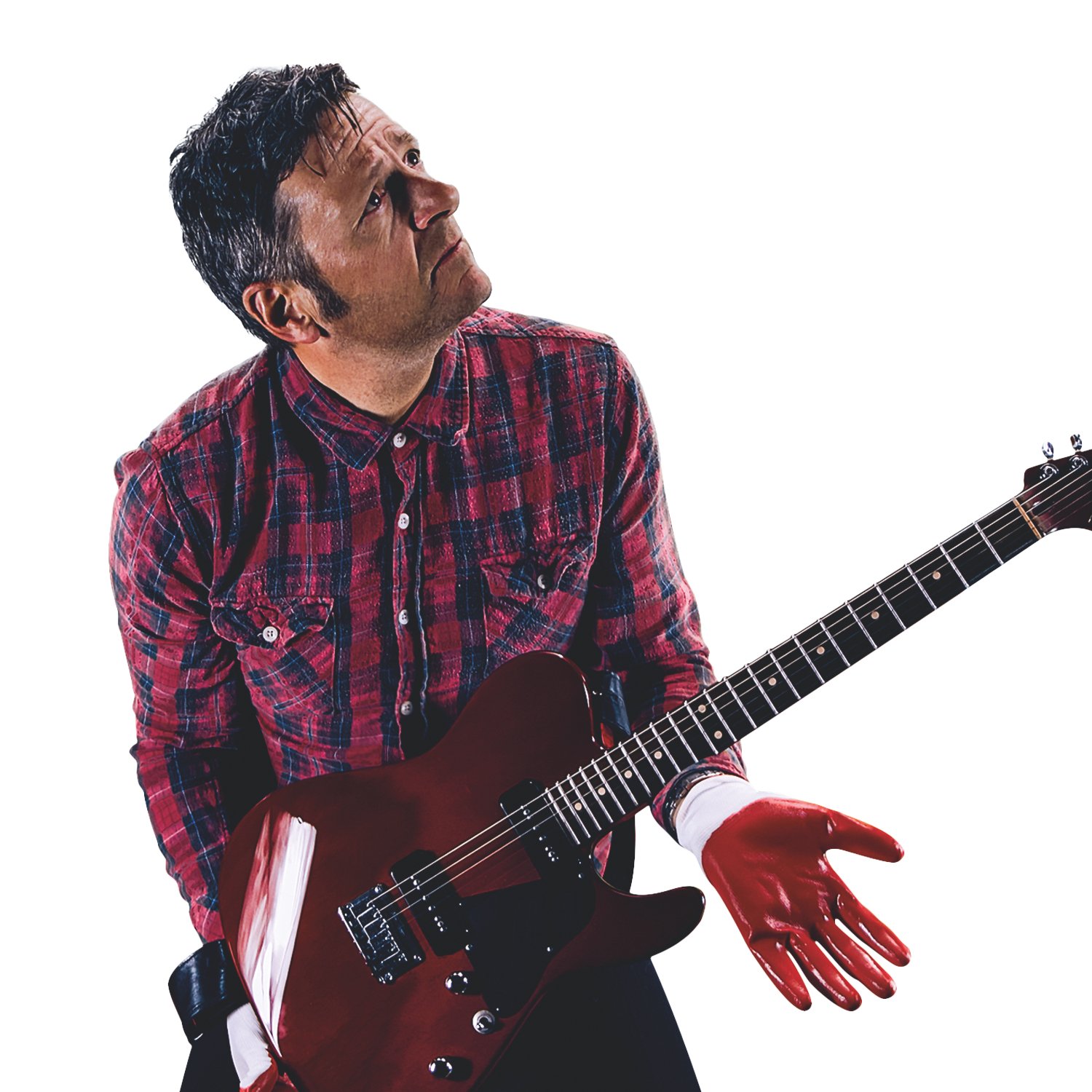TRACK MIX & MASTER WITH THE DANGEROUS SYSTEM - MICHAEL JAMES
Producer Michael James tracks, mixes, and masters diverse sounds with the Dangerous System
By Brooke Bilyj
Michael James will tell you that his career as a recording artist and audio producer is the culmination of lucky breaks. Perhaps he’s too humble to admit that his sonic success comes from his ability to coax emotion out of any gear—whether he’s luring a melody from his guitar or mixing albums for other musicians on his arsenal of Dangerous Music equipment.
By leveraging his range of musical talents from songwriting to performing to producing, he “can either have a big thumbprint or an invisible thumbprint on each album,” Michael says. “It’s fulfilling in so many ways.”
His music career launched “serendipitously” at age 19, when Radio Tokyo owner, Ethan James (no relation) walked by the control room just as Michael’s demo tape was playing, and offered him a record deal on the spot. “I just happened to be in the right place at the right time,” he says. He went on to join the band, Waves of Grain, whose indie release, “Catch Me I’m Falling,” saw “some pretty impressive success on college radio” and even scored an international licensing deal in 1985.
After that, Michael spent a few years trying to make it as a session musician while attending UCLA on a full scholarship. But then, Ethan hired him to clean the studio overnight while learning to use the gear. A self-taught engineer, Michael’s big break as a producer came when Ethan asked him to cover a recording session with a band from New York called Too Much Joy. The band ended up asking Michael to produce their first album for Alias Records, as well as their major label debut for Giant Records.
“All of a sudden, I was a producer with a hit at age 26,” Michael says. “But it all began with a lucky break.”
As staff producer and chief engineer at Radio Tokyo in the late 80s, Michael recorded classic rock legends including The Doors’ keyboardist, Ray Manzarek, and Mr. Mister front man, Richard Page. He went on to produce debut albums for bands like L7 and Hole, while working with artists like Jane’s Addiction and Mazzy Star. This opened up doors for Michael, who became producer and head of A&R at Warner Music Group’s Discovery Records label, before returning to freelance work and discovering bands like New Radicals—whose album went platinum.
In 1997, Michael launched Alternator Records as an incubator to discover and develop rising stars. Nearly a decade later, in 2006, he co-founded the independent label, Fresh Baked Music, with the same goal. Around that time, he also discovered Dangerous Music, which sent him down a new path of engineering prowess as he continued to expand his roster.
Multi-bus submixing
After growing up working on large format analog consoles, Michael realized that he needed a crystal-clear monitor controller for mixing 5.1 surround sound. He asked for a recommendation from producer Fab DuPont, who pointed him toward the Dangerous MONITOR-ST/SR. The combination system provided “fantastic monitoring for a surround setup,” Michael says. Now, nearly 15 years later, he has expanded his Dangerous monitor collection to include two additional SRs, allowing him to monitor 12 channels in Atmos with precise clarity and pure audio signals.
Since then, Michael has gradually built an arsenal of Dangerous gear spanning the entire System Complete—and then some. Today, his studio features a unique mixing console centered around multiple Dangerous 2-BUS and 2-BUS+ systems for analog summing. Using this setup, he developed a novel multi-bus submixing technique, which he describes using a metaphor with three lanes of traffic that go through a toll booth before merging into one lane.
The three lanes represent three separate submixes: Bus A contains vocals and ancillary effects, Bus B carries the bass and drums, and Bus C has the other instruments that get panned out to the sides—such as guitars, keys, strings, and horns. The output of each submix goes through its own “toll booth,” or 2-BUS summing mixer, for processing with variable EQ and compression. “Then,” he says, “they merge into one lane: the final stereo mix bus, which gets summed through a 2-BUS+ that has its own mix bus processing on it.”
This approach allows Michael to brighten a single bus, like drums, without affecting the entire mix, which might inadvertently crank up the sibilance in the vocals. “I can just adjust one submix at a time and make that thing really crystalline clear, but still keep the vocals warm,” he says. “If you try to do that with a typical stereo mix bus, when you change one thing, it can change everything else.”
While other producers might consider this multi-bus method tedious, Michael says that his intricate Dangerous System helps him work faster and provides the sonic edge that sets him apart.
“I don't like to think of music as a competitive sport, but it is,” he says. “If somebody's stuff sounds better or even louder than mine does, then they're going to get the gig. I need a way to compete with that loudness, but without making it so loud that it sounds nuked. I want it to feel beautiful with nuanced detail, because that’s where a lot of the emotion lives. Dangerous gear delivers that instantly. I’m going to take every advantage that I can by having the best gear at my disposal.”
Frequency filtering
In Michael’s submix bus processing chain, Busses B and C are each connected to a Dangerous BAX EQ to control the frequency before summing his final mix.
The BAX EQs “always have the cut filters on,” he says. “I find those indispensable because, for example, if I’m mixing some urban rock or hip-hop that wants a lot of low-end, there’s some noise below 20 Hz that you just don’t need. With the BAX EQ, I can quickly go from 12 Hz to 18 to 24 to 30, and get a tight melodic low-end that’s not going to make you shit your pants.”
Meanwhile, the high-end filters on his BAX are usually engaged at 70 kHz to dial down harsh ultrasonics. These sophisticated filtering options sweeten his shelves with profound control and clarity that he just can’t get from other EQs—cutting out the unwanted noise without distorting the rest.
“When you boost most EQs, you can hear what they do with phase weirdness,” he says. “I can hear them turning up the noise and the bad stuff along with the frequencies that you want to hear. So, typically when I’m EQing surgically, I’m cutting rather than boosting. But with the BAX EQs, you don’t just have to cut; you can boost without adding any unwanted noise or phase weirdness.”
This filtering step, in turn, eases the burden on Michael’s converters—which include one Dangerous CONVERT-AD+ for capturing the final stereo mix, four CONVERT-8 DA converters for analog summing, and one CONVERT-2 DA converter for analog monitoring.
“When you’re printing your final mix, if your converters are working hard to reproduce stuff that you're not going to hear anyway, they can sound gritty and harsh,” he says. “Once you take away the noise that you don’t need, your converters sound silky smooth.”
Michael also uses his Dangerous CONVERT-AD+ as his master clock, distributing it to everything digital in the studio that requires clocking. “It’s like voodoo magic,” he says. “Like you may think a photograph is focused until you see something really in focus—that’s what the clocking did for me.”
Dynamic shaping
To merge the three lanes of submixes, Michael sends the summed stereo bus output to a Dangerous LIAISON, where he has a selection of compressors and EQs plugged in to master the final mix before the track hits the final CONVERT-AD+ converter.
“The three submixes are summed through the final 2-BUS+ that has a LIAISON on the end of it, populated with various EQs and compressors,” he says. “The very last thing in the chain before it goes to the Dangerous CONVERT-AD+ to capture the final stereo mix is a Dangerous COMPRESSOR. I have it there, not just for protection, but also for the tone that it imparts.”
The SmartDyn button on Michael’s COMPRESSOR is almost always engaged, along with the Bass Cut side chain filter. The sophisticated dynamic shaping processors give him versatility—either feeling like a classic SSL compressor or pushing way beyond that by engaging additional filters.
“Something it does that’s very different than a lot of compressors is that you can make it transparent, or you can make it really grabby,” he says. “You can make it pump and sound like stuff has gone nuclear with some of those side chain buttons, or you can make it feel like an SSL compressor. But one thing you can’t do, which I love about this COMPRESSOR, is make it distort. It’s going to give you the feel, but not the distortion, which means I can pump like crazy and still keep all the beautiful euphonic details I worked so hard to get.”
From the COMPRESSOR, Michael’s mix heads into the Dangerous LIAISON, where programmable patching accelerates his workflow. In fact, he often wonders how he ever worked without it.
“It’s like having a speed-of-light assistant engineer plugging things in and out of your patch bay,” he says. “Back in the old days, you’d have to unpatch, then repatch, make sure you didn't cross-patch, and then record both versions on two different channels, then go back and forth to decide. With LIAISON, you just press a button and it’s done for you. It’s totally instant, so it’s a huge time-saver.”
Fine-tuned flexibility
All this Dangerous gear gives Michael the flexibility to handle any type of music in his studio—whether it calls for pure, transparent audio paths or thoroughly saturated coloration.
“Part of the Dangerous aesthetic is mastering quality transparency,” he says. “It lets you add whatever coloration you want, or no coloration at all. That ultimately lets me handle whatever is thrown at me, because it’s so easy to balance between different styles and moods.”
This versatility was key when Michael set out to record his second album, “Shelter in Place,” during the pandemic lockdown in 2020. Recorded remotely in collaboration with a star-studded lineup of special guests—like David Kahne, who produced Paul McCartney and Stevie Nicks; Linda Taylor of “Whose Line Is It Anyway?”; Hoobastank drummer, Chris Hesse; and Weezer’s original guitarist, Jason Cropper—the album tells a stylistically diverse narrative that sways between Americana folk, jazz fusion, reggae, and orchestral vibes.
“I have very broad musical tastes, and I used different influences to help tell the stories on this album,” Michael explains. “It doesn’t have one particular sound; it plays more like a playlist.”
Playing with themes of “love, isolation, loss, mortality, and ultimately hope,” Michael says the album explores the uncertainty of life without being morbid, thanks in part to the empathetic lyrics and layered instrumentation. A follow-up to his 2015 debut instrumental album, “Marchesano,” (his legal surname), Michael’s latest release is about “choosing to find the serendipity in a shitshow,” he says. “Life can be far too short, so let’s live while we can and make some cool music while we’re at it.”
Whether he’s producing work for other artists or rallying his musician friends to record his own album, Michael uses Dangerous gear like a fine-tuned instrument to achieve his artistic vision.
“Dangerous Music was the backbone for this album,” Michael says. “Everything went through a piece of Dangerous gear, which allowed me to work very quickly while collaborating with other artists. If I had an idea in my head, I didn’t have to fuss with any equipment. I could just plug it in, press record, and perform, and it sounded the way that I imagined it.”
For more information on Michael James visit: https://linktr.ee/michaeljamesproducer










